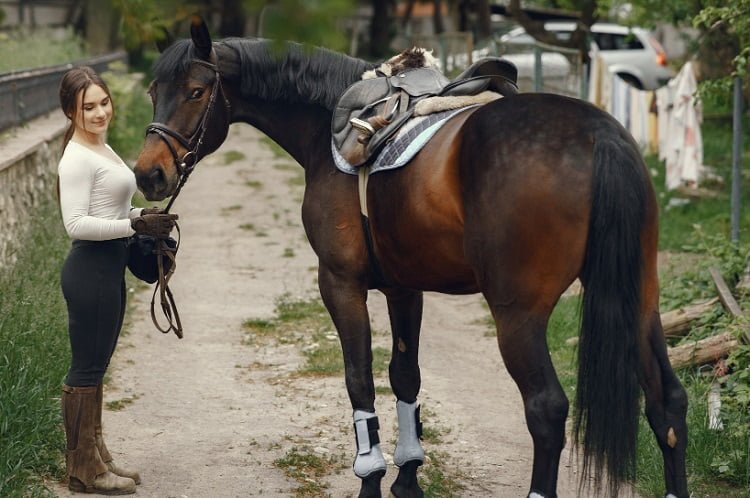Take the necessary precautions to ensure the safety of both you and your horse as you venture into the world of horse jumping.
Horse jumping is an equestrian sport that requires strength, agility, and adjustability from both the horse and the rider.
Jumps range from low poles on the ground to more complicated and intimidating types like combinations of oxers (jumps that are two or three rails wide) and verticals.
When approaching a jump, the horse lifts its head to assess and plan its takeoff, bending and compressing itself like a coiled spring.

Safety Harnesses
Each year, thousands of horse-related injuries occur, many of which are due to jumping. Most of these accidents would have been avoidable if I had the proper horse jump accessories near me.
Safety helmets are an absolute necessity for any equestrian, regardless of discipline. Look for helmets that meet or exceed the regulations of your governing body, and consider finding one with multiple certifications to ensure it meets various standards.
A helmet comprises a layer of expanded polystyrene, or EPS, which absorbs and dissipates energy from an impact. When a helmet is hit, it’s essential to replace it, even if the outer shell looks intact, as EPS beads can burst and reduce the protective power of the helmet.
A harness is placed around the rider’s chest and is secured to a lanyard attached to the saddle. The lanyard is pulled in the event of a fall, which triggers a system that releases bags filled with pressurized air from within the vest, similar to an airbag in a car.
Body Protectors
Body protectors are designed to reduce the impact and forces on a rider’s back if they fall from their horse. Depending on your discipline, you may want a vest or an air protector (or a hybrid option that combines both advantages).
Look for body protectors that are certified by recognized safety standards organizations. These are the best options for maximum protection and comfort. A body protector should fit snugly and be fastened securely with a zip, sliding buckle, or clip. It is essential to check for dents in the foam after every use.
These should disappear within 30 minutes; if they remain, the body protector is no longer safe and must be replaced. Avoid second-hand body protectors as they may have hidden damage that is not visible or reflected in the certification tests.
Additionally, steer clear of jump cups with exposed metal pins because there is a considerable chance that the rider will get hurt if they fall.
Plastic Jumps
The key to a successful horse jump is the rider. They should be centered over the horse and have a solid seat, evenly distributing the rider’s weight across both legs.
Keeping the heels down is essential, as high heel positions can destroy the balance and create confusing cues for the horse. Ideally, the arena should be a safe and enclosed space for jumping.
Riders should also practice riding with a friend or companion to learn the proper technique and to avoid falling off the horse.
In addition to safety helmets and body protectors, plastic cavaletti can help riders improve their jumping skills. Cavaletti are blocks that can be rotated to different heights, allowing riders to gradually build up their ability to take on more advanced fences.
Safety Helmets
Whether you are jumping to improve your riding or are participating in a show, it’s essential to be safe. The right equipment can help you stay on your horse and protect you from injuries in the event of a fall.
[penci_related_posts dis_pview=”no” dis_pdate=”no” title=”” background=”” border=”” thumbright=”no” number=”3″ style=”grid” align=”right” withids=”” displayby=”cat” orderby=”title”]A helmet is the most essential piece of safety equipment for any rider. It should meet all FEI regulations, and it’s recommended that you replace your helmet every five years or after a severe accident.
It’s also essential to ensure that your helmet fits correctly. To check, shake your head while the helmet is on and see if it shifts from side to side or back and forth. It should be snug but comfortable.
If it’s too loose, you should get a smaller size. Consider one designed with MIPS, a technology that protects the brain from rotational motion caused by angled impacts.
Although more costly, this kind of helmet can lessen the severity of a brain injury.
Related: Horse Racing Tours: What Are They and What Makes Them So Popular?

